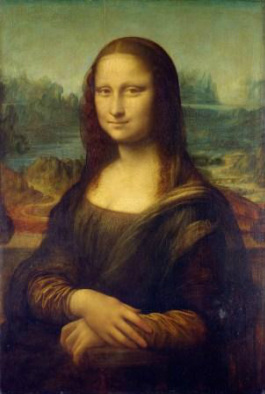 Santissima Annunziata Basilica
Santissima Annunziata Basilica The tomb contains the family of Lisa Gherardini, the wife of a wealthy silk merchant, who is believed to have sat for the artist. The work was requested by subject’s husband, Francesco Del Giocondo. Lisa was from a family known through Tuscany and Florence.
It is hoped that some of the bones will belong to at least one of her blood relation, probably her son, Piero. They will use the DNA of her family to identify her from three skeletons of nuns who died in 1542 found in the nearby convent of Saint Ursula.
Scientists cut a round hole in the stone church floor above the family crypt of Florentine silk merchant Francesco del Giocondo. The tomb lies behind the altar of the Santissima Annunziata Basilica.
Leonardo da Vinci took about 15 years to complete what has become one of the most famous paintings of all time. After Leonardo's death, it was acquired by the King of France. The painting is now the biggest attraction in the Louvre museum in Paris.

There is a rumor that Mona Lisa has no eyebrows in the painting because when they were trying to restore the painting, they made an error and removed the eyebrows accidentally. However, others think that Da Vinci never finished the painting because of he was the consummate perfectionist and also because most of Leonardo’s paintings were left unfinished.
The Mona Lisa was painted in oil, with a cottonwood panel as the surface. It is unusual in that most paintings are commissioned as oil on canvas, but the cottonwood panel is part of what has attributed to the fame of the painting. Because of the medium used for the image, the Mona Lisa has survived for six centuries without ever having been restored–a trait very unusual when considering the time period of the piece.
Da Vinci also created a background with aerial views and a beautiful landscape, but muted from the vibrant lightness of the subject’s face and hands. The technique Da Vinci used in executing the painting left behind no visible brush marks, something that was said to make any master painter lose heart. It is truly a masterpiece.
Many have been puzzled by Mona Lisa's smile—radiant one moment and serious the next. Scientific studies have been conducted on groups of viewers. Human eyes send mixed signals to the brain about her smile. Different cells in the retina transmit different categories of information or channels to the brain. These channels encode data about an object's size, clarity, brightness and location in the visual field. Sometimes one channel wins over the other, and you see the smile, sometimes others take over and you don't.
And so, once again, science will prove the identity of the mysterious woman in the famous painting. The only mystery remaining will be how Da Vinci managed to capture the enigmatic smile.

 RSS Feed
RSS Feed






